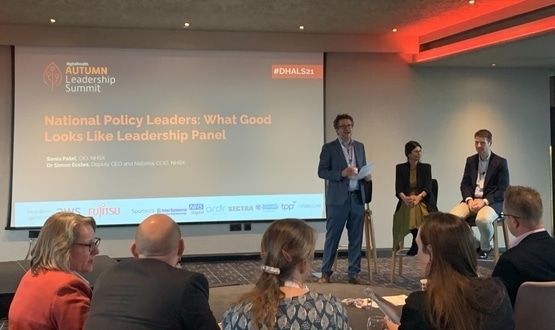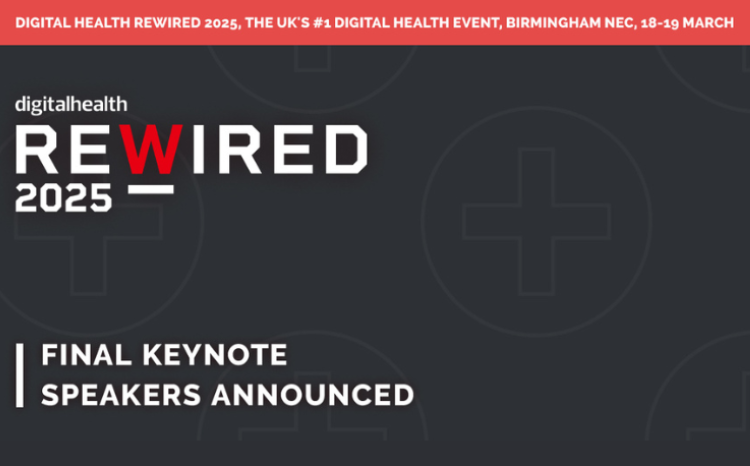ICSs expected to deliver ‘fully costed digital plan by March 2022’
- 7 October 2021

All Integrated Care Systems (ICSs) will be expected to have a fully costed and sustainable digital plan in place by March 2022, the national CIO has said.
Speaking at Digital Health’s Autumn Leadership Summit in Birmingham, Sonia Patel outlined the next steps of the What Good Looks Like (WGLL) framework.
Launched at the beginning of September 2021, the framework aims to set a clear direction on digital and data for NHS organisations.
Patel confirmed the next steps for implementing WGLL will be a “package of support” to provide further guidance and criteria around the recommendations sets out in the framework – something digital leaders and our own CEO Jon Hoeksma had said was needed.
Every ICS by the end of March 2022 will have a costed and sustainable digital plan, she added.
Patel was joined by her NHSX counterpart Simon Eccles, CCIO, who said traditionally “we’ve created an environment in which the centre dictates” which had “inhibited local innovation around solving problems”.
He said the aim of WGLL is to move away from that model of digitisations to be “much more about local decision making”.
“We’re insisting that clinicians from every background are involved in determining what this programme looks like,” Eccles added.
Responding to a question from the audience about what good will feel like, Eccles said it will be “an improvement in every day working lives”.
“It’s not just those of us with chief titles at the top, it’s got to be as wide spread as education.”
Both national leaders agreed data has a role to play in levelling up digital services across the NHS, with Patel saying it’s the “mother pearl in terms of digital infrastructure”.
Ransomware the ‘greatest risk’
Earlier in the afternoon attendees heard from Neil Bennett, CISO at NHS Digital, who revealed the organisation had recently agreed with NHSX to allocate extra money through the Unified Tech Fund to help NHS organisations bolster cyber security.
Trusts will be able to apply for up to £20,000 of additional funding to “support organisations bringing in specialist resource”.
He spoke of the need for cyber security services and resources to be extended across both health and social care organisations, warning that it goes beyond technology.
“Cyber security is a patient safety risk, it’s not just buried in technology,” he said.
Bennett reminded the audience that cyber security was still at the forefront of national NHS priorities, adding that ransomware continues to be the “greatest threat” to the UK health sector.
In the last year the number of cyber incidents dealt with by NHS Digital rose by 150%, Bennett said.
“This threat is real, its real to the NHS, and we are seeing quite an increase in sophistication,” he added.
A spokesperson from NHSX told Digital Health News: “Additional revenue funding for cyber security will be added into the Unified Tech Fund in the coming weeks for local organisations to bid for.”
Bennett was followed by Mat Chase, CTO of Fujitsu, who made the case for cloud technology.
Cloud is the best way to deliver the transformation “you’re being expected to” over the next few decades, according to Chase.
But it will be a hybrid model of digitisation with some programmes remaining on local systems. “I don’t think we’re ever ging to get to the point where everything is hosted in the cloud,” he said.
On a slightly less digital note, Chase also said cloud and digital technology can make a “massive contribution” to carbon net zero ambitions for the national NHS and individual trusts.




